PowerPoint 2016 -
Charts

PowerPoint 2016
Charts


/en/powerpoint2016/tables/content/
A chart is a tool you can use to communicate data graphically. Including a chart in a presentation allows your audience to see the meaning behind the numbers, which makes it easy to visualize comparisons and trends.
Optional: Download our practice presentation for this lesson.
Watch the video below to learn more about using charts in PowerPoint.
PowerPoint has several types of charts, allowing you to choose the one that best fits your data. In order to use charts effectively, you'll need to understand how different charts are used.
Click the arrows in the slideshow below to learn more about the types of charts in PowerPoint.
In addition to chart types, you'll need to understand how to read a chart. Charts contain several different elements—or parts—that can help you interpret data.
Click the buttons in the interactive below to learn about the different parts of a chart.

The legend identifies which data series each color on the chart represents. In this example, the legend identifies the different months in the chart.
PowerPoint uses a spreadsheet as a placeholder for entering chart data, much like Excel. The process of entering data is fairly simple, but if you are unfamiliar with Excel you might want to review our Excel 2016 Cell Basics lesson.
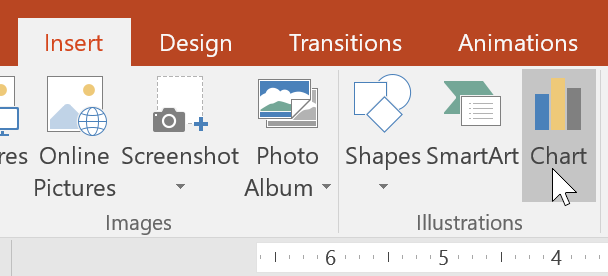
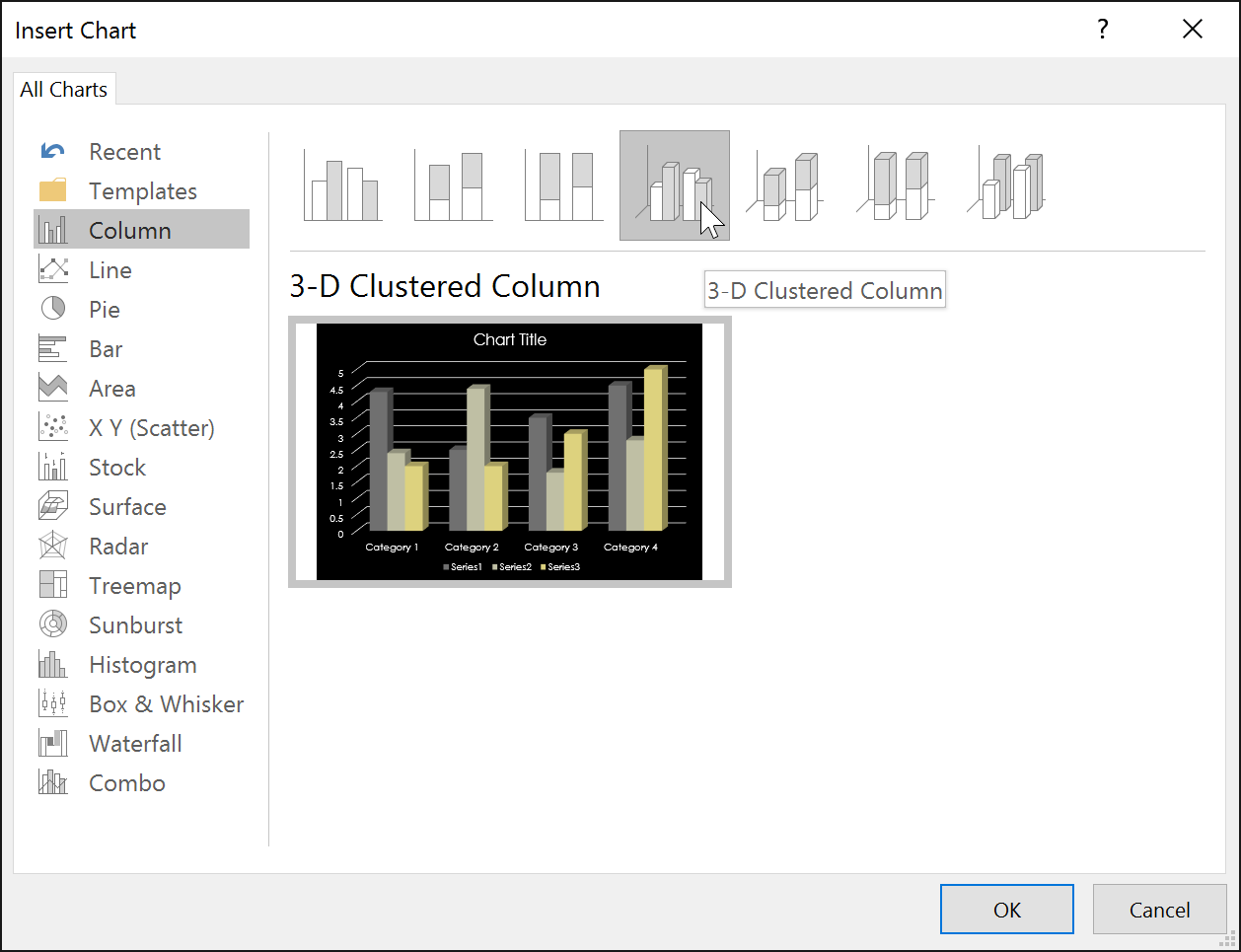
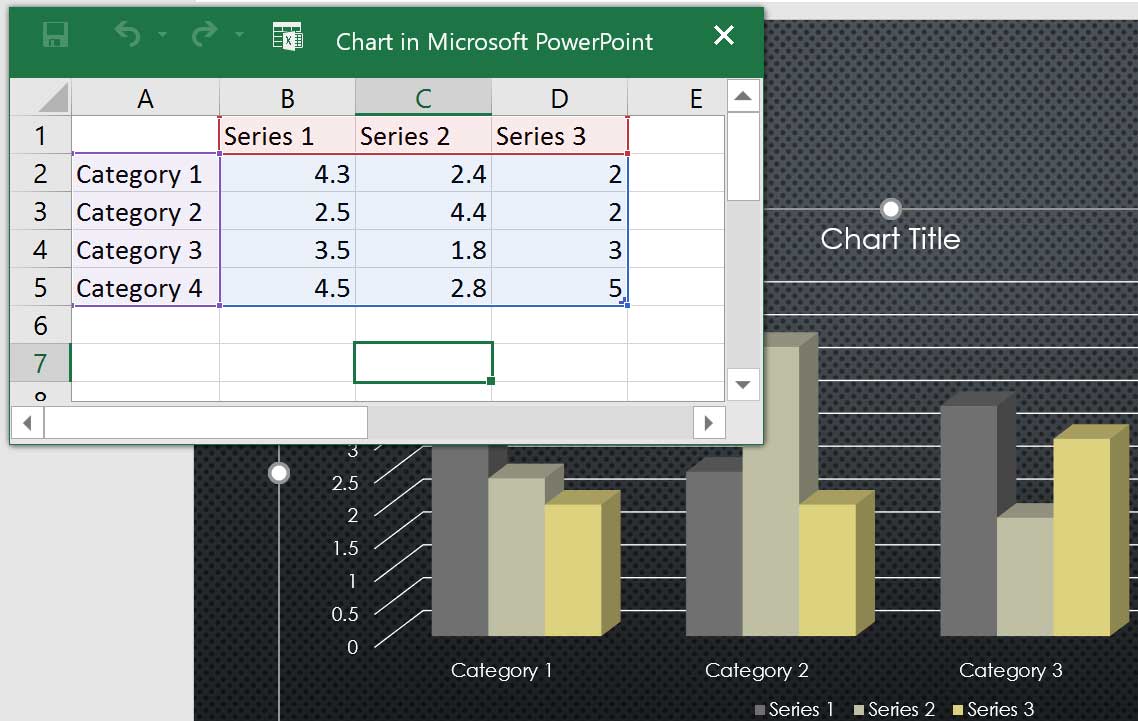
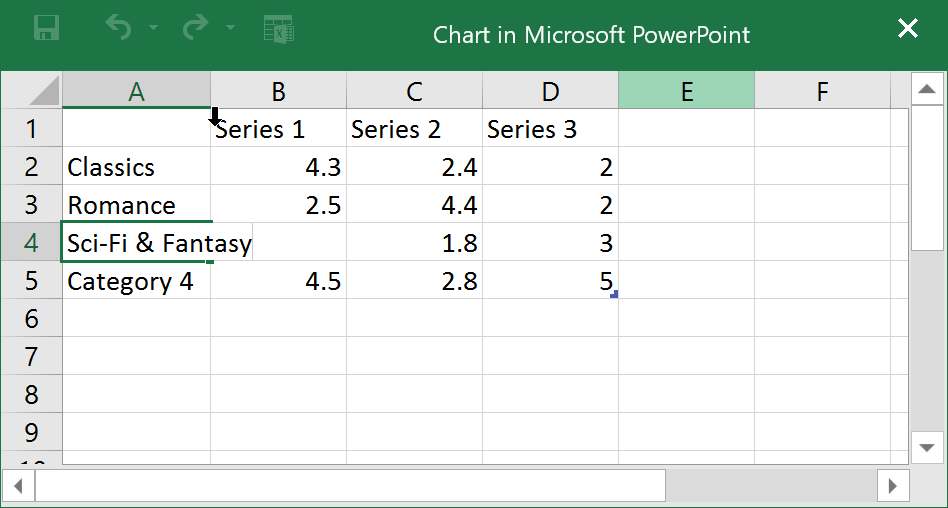

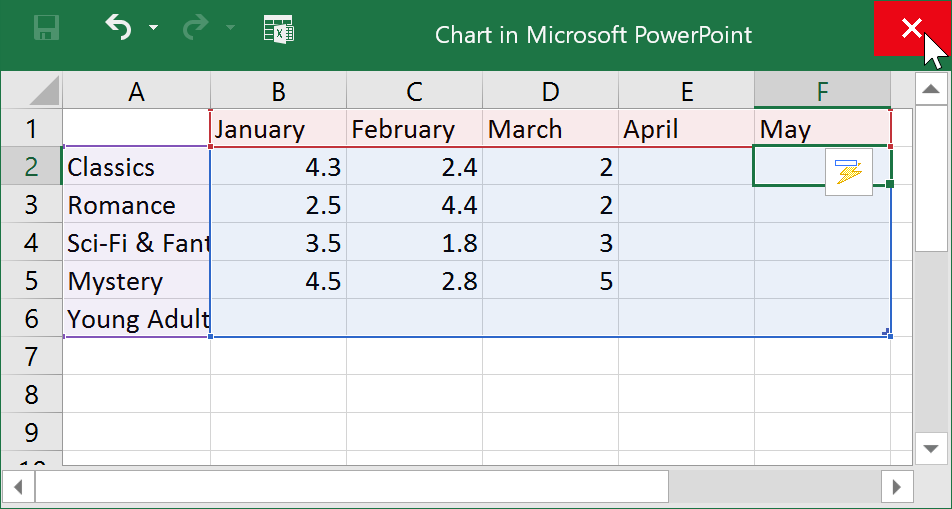
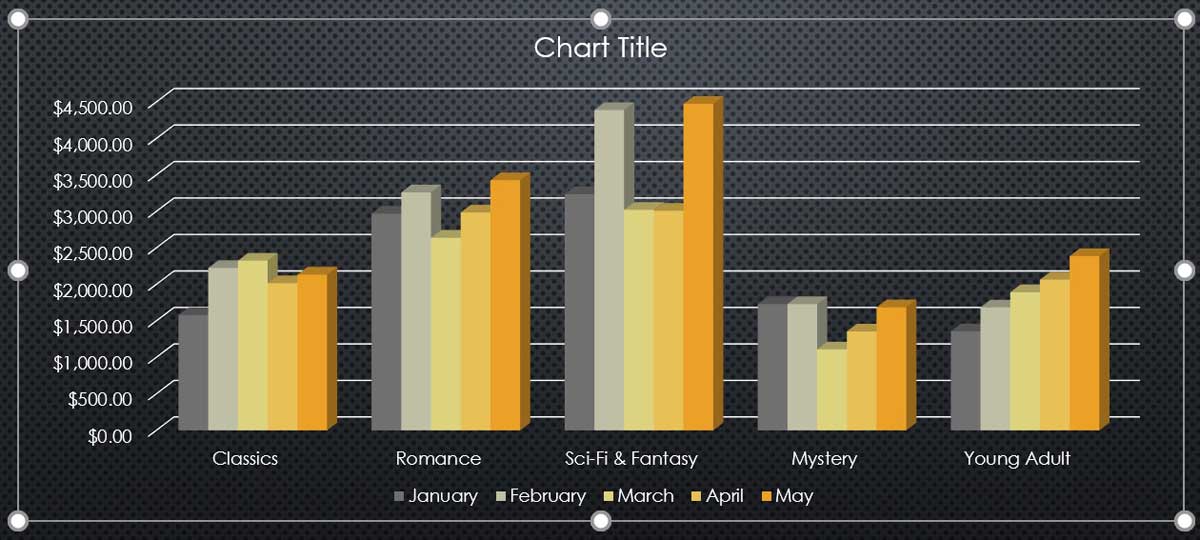
You can edit the chart data at any time by selecting your chart and clicking the Edit Data command on the Design tab.

You can also click the Insert Chart command in a placeholder to insert a new chart.
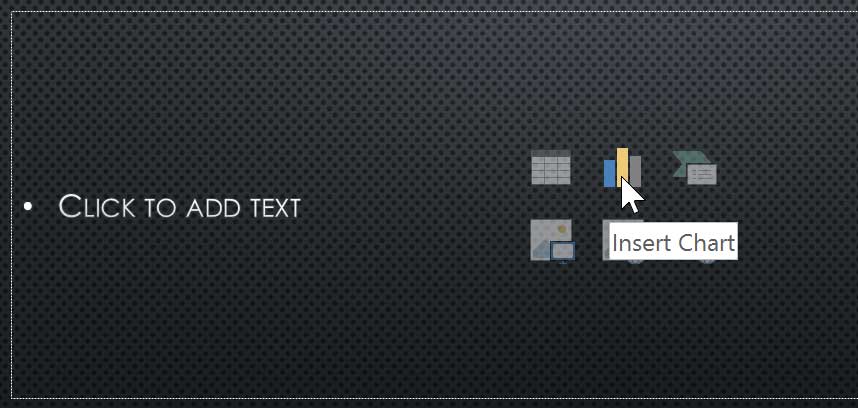
If you already have data in an existing Excel file you want to use for a chart, you can transfer the data by copying and pasting it. Just open the spreadsheet in Excel, select and copy the desired data, and paste it into the source data area for your chart.
You can also embed an existing Excel chart into your PowerPoint presentation. This may be useful when you know you'll need to update the data in your Excel file and want the chart to automatically update whenever the Excel data is changed.
Read our guide on Embedding an Excel Chart for more information.
There are many other ways to customize and organize your charts. For example, PowerPoint allows you to change the chart type, rearrange a chart's data, and even change the layout and style of a chart.
If you find that your data isn't well suited to a certain chart, it's easy to switch to a new chart type. In our example, we'll change our chart from a column chart to a line chart.
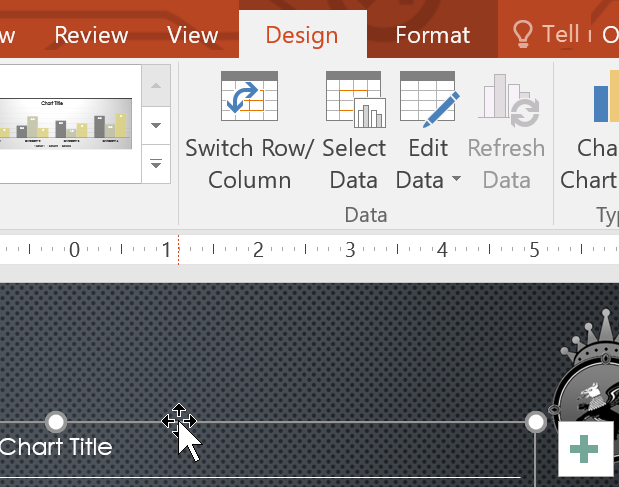

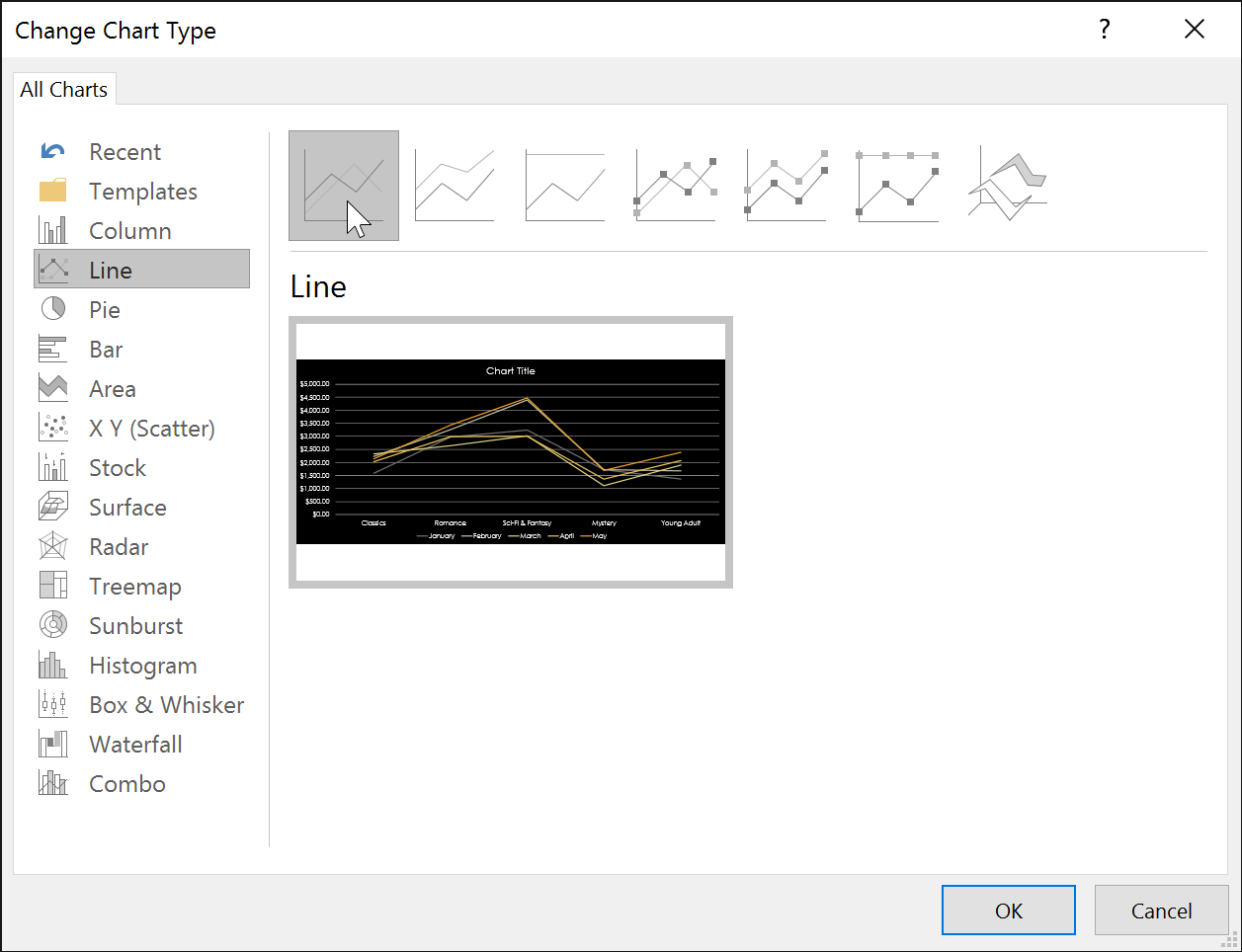
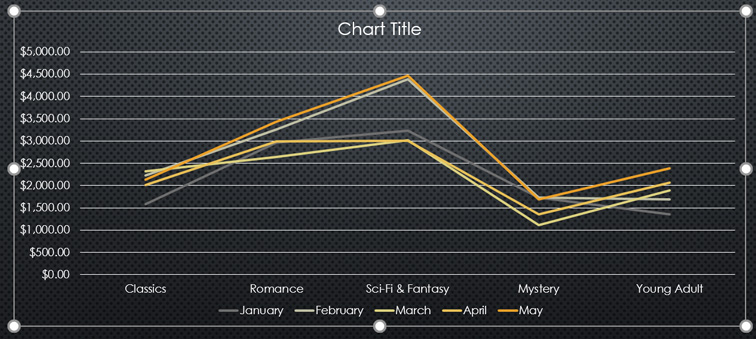
Sometimes you may want to change the way charts group your data. For example, in the chart below the book sales data is grouped by genre, with lines for each month. However, we could switch the rows and columns so the chart will group the data by month, with lines for each genre. In both cases, the chart contains the same data; it's just organized differently.
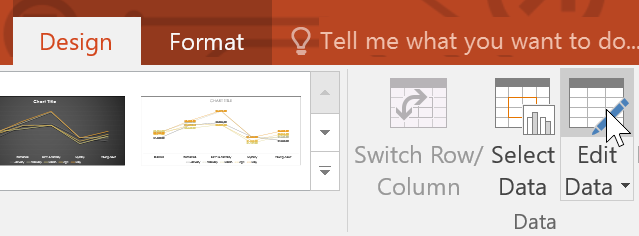
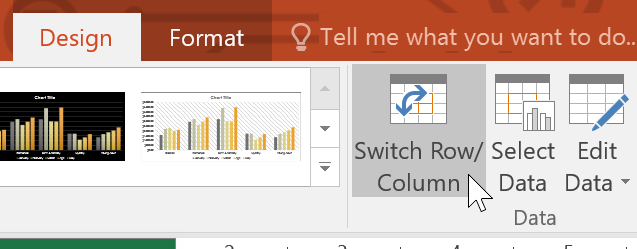
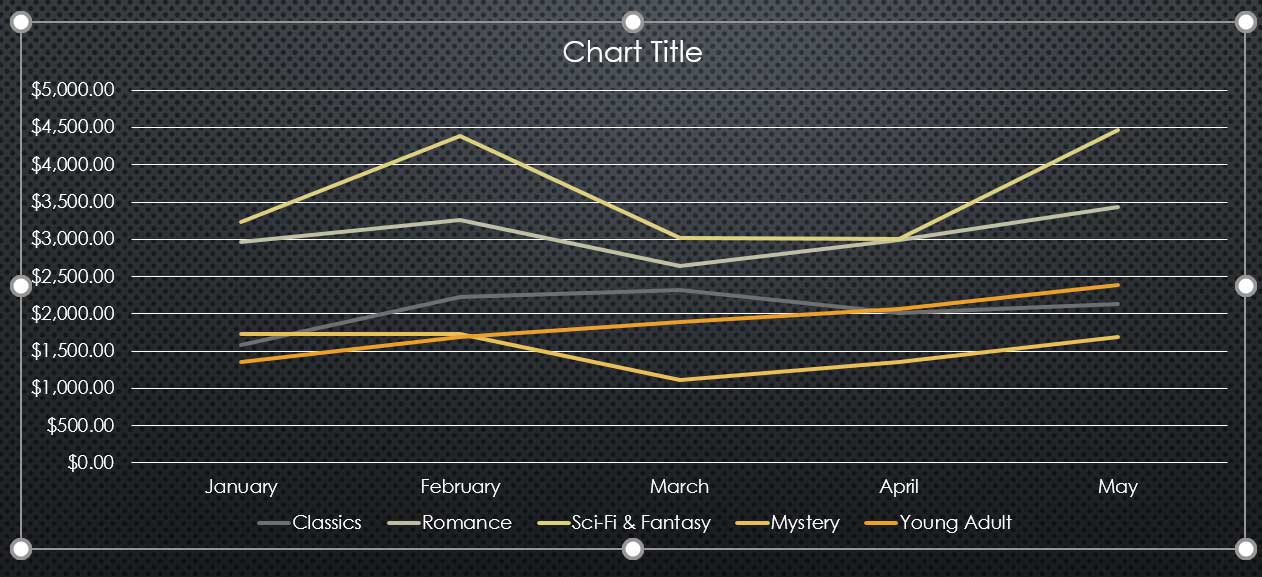
We've noticed that when numerical data has been entered in the first column of the spreadsheet, switching rows and columns may cause unexpected results. One solution is to type an apostrophe before each number, which tells the spreadsheet to format it as text instead of a numerical value. For example, the year 2016 would be entered as '2016.
Predefined chart layouts allow you to modify chart elements—including chart titles, legends, and data labels—to make your chart easier to read.



To change a chart element (such as the chart title), click the element and begin typing.

Chart styles allow you to quickly modify the look and feel of your chart.

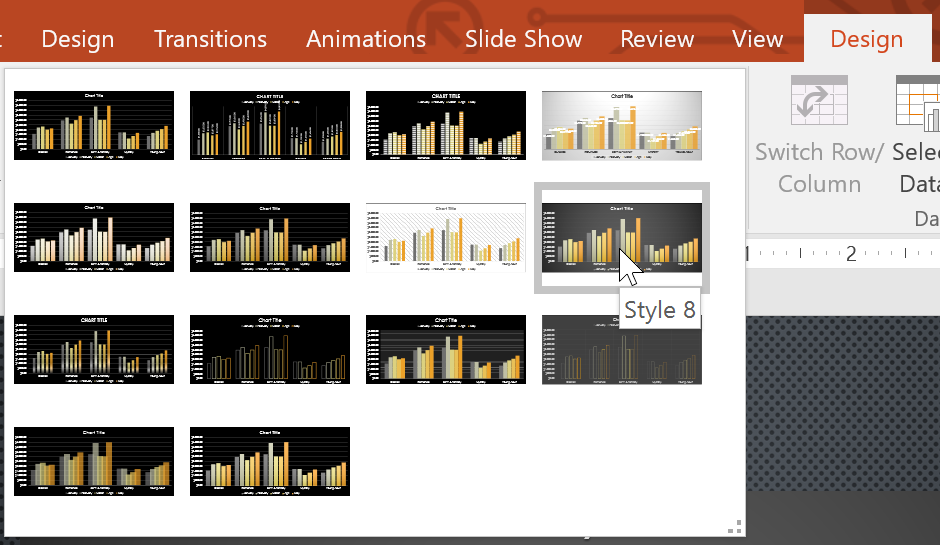
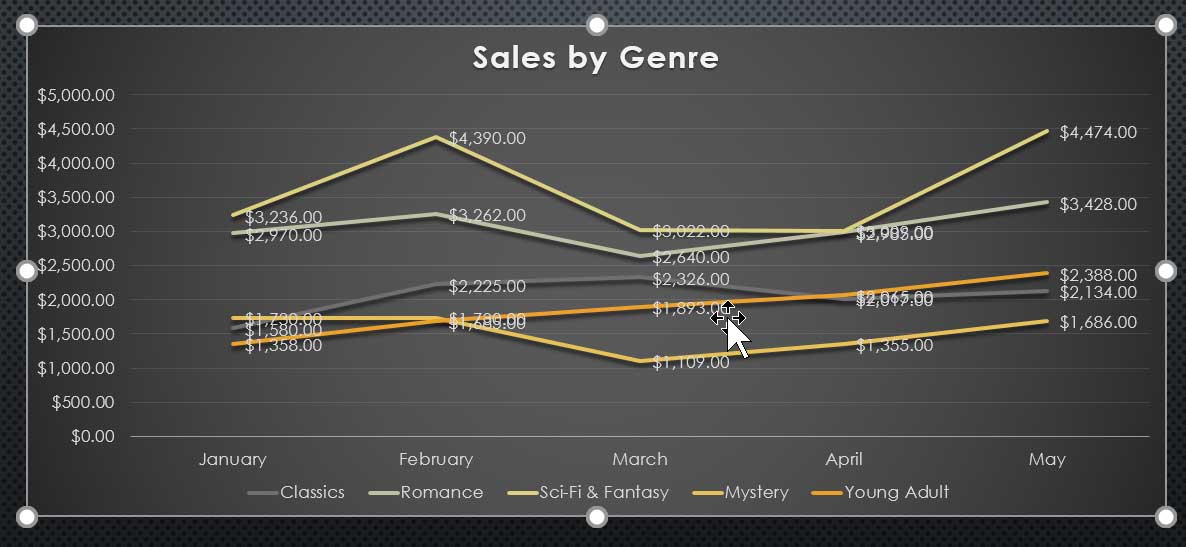
You can also use the chart formatting shortcut buttons to quickly add chart elements, change the chart style, and filter the chart data.
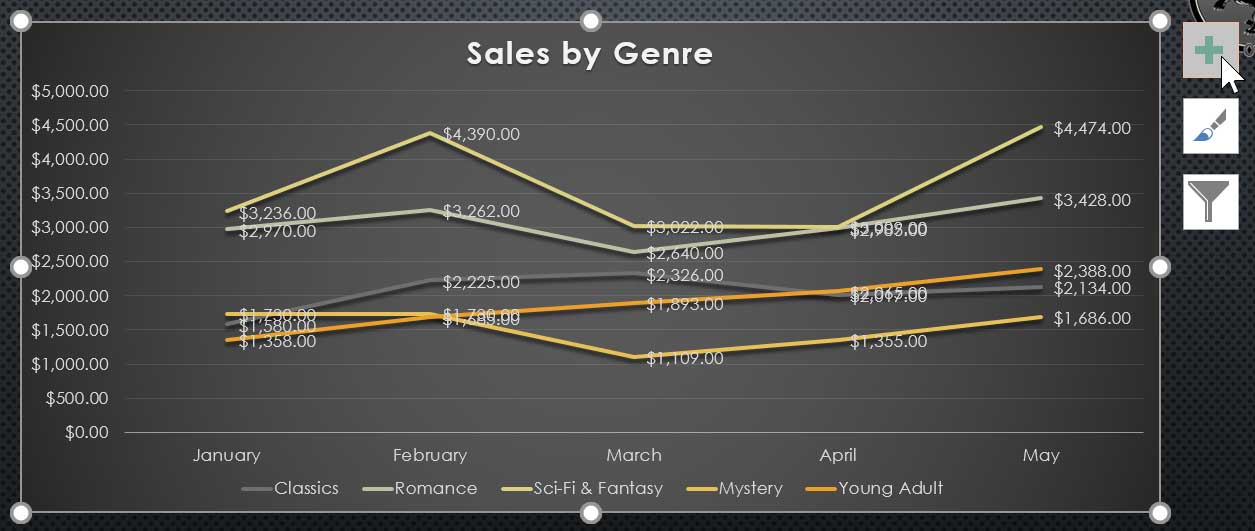
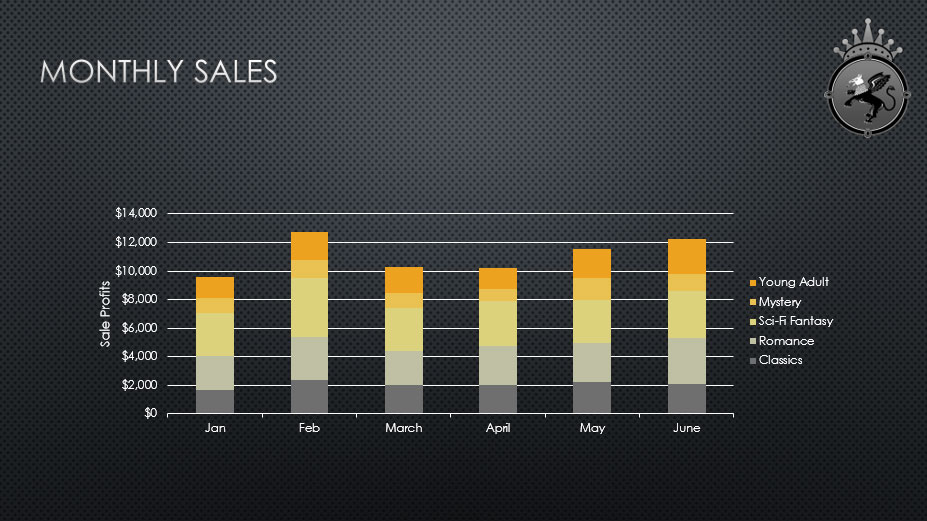
/en/powerpoint2016/smartart-graphics/content/